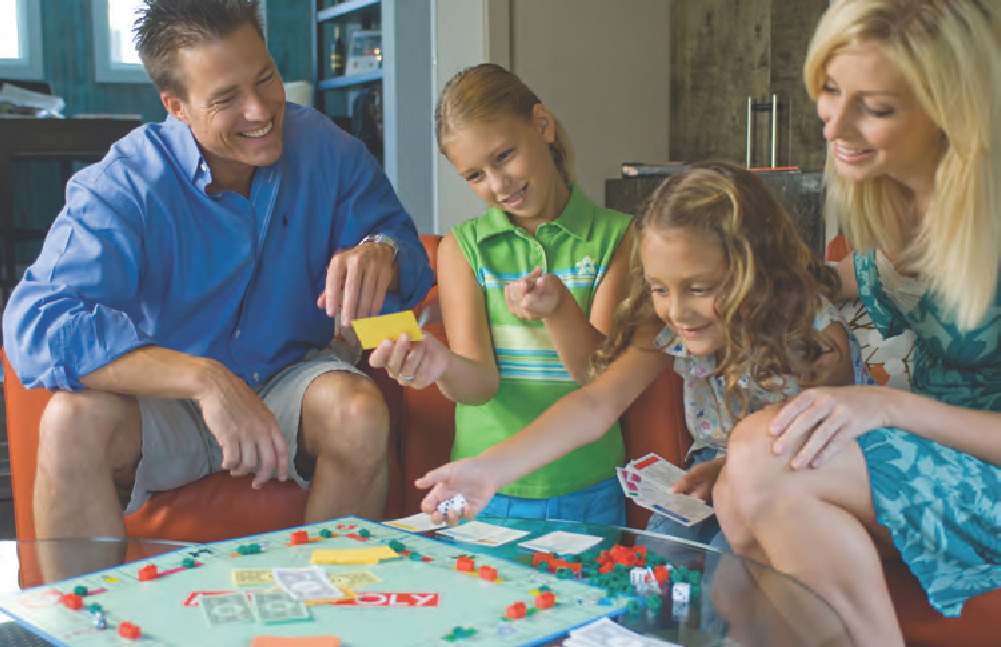Mothers, Fathers, and Siblings
As part of their focus on family dynamics, developmentalists have examined differences in children’s interactions with mothers, fathers, and siblings. They have been particularly interested in these two questions: How do mothers and fathers differ in their parenting? How do siblings affect one another?
Differences in Mothers’ and Fathers’ Interactions with Their Children

It will come as no surprise that there is a great deal of difference, both quantitative and qualitative, between mothers’ and fathers’ interactions with their children. Although in most Western cultures today spouses share child-care responsibilities to some degree, in the majority of families, mothers—including those who work outside the home—still spend considerably more time with their children than fathers do (Biehle & Mickelson, 2012; Dubas & Gerris, 2002; Gaertner et al., 2007). In the United States, this pattern seems to hold across the major ethnic groups, continuing from the early years into adolescence (Parke & Buriel, 1998).
Fathers’ participation in child care differs from mothers’ not only in amount but also in kind. Mothers are more likely to provide physical care and emotional support than are fathers (M. Moon & Hoffman, 2008; G. Russell & Russell, 1987). In contrast, fathers in modern industrialized cultures spend a greater proportion of their available time playing with their children than do mothers, both in infancy and childhood, and the type of play they engage in differs from mothers’ play as well (Parke & Buriel, 1998). In an Australian study, for example, fathers were more likely to engage their children in physical and outdoor play activities (e.g., rough-and-tumble play and playing ball) than were mothers (G. Russell & Russell, 1987). Mothers, on the other hand, were likelier to play more reserved games with their children (e.g., peekaboo), to read to them, and to join them in play with toys indoors (Parke, 1996; G. Russell & Russell, 1987).
483
Although these general patterns prevail in many cultures, there are also some cultural variations. Fathers in Sweden, Malaysia, and India, for example, do not report much play at all with their children (C. P. Hwang, 1987; Roopnarine, Lu, & Ahmeduzzaman, 1989). Indeed, both mothers and fathers in some cultures simply play less with their children than American parents do (Göncü, Mistry, & Mosier, 2000; Roopnarine & Hossain, 1992). In a study of Gusii infants and parents in Kenya, fathers were seldom seen within 5 feet of their infants, and mothers spent 60% less time playing with infants than American mothers typically do (R. A. LeVine et al., 1996). The degree of maternal and paternal involvement in parenting and the nature of parents’ interactions with children doubtlessly vary as a function of cultural practices and such factors as the amount of time parents work away from home and children spend at home.
Economic and educational factors also seem to be related to the degree to which mothers engage in various caregiving activities. In a study of mothers in 28 developing countries who had children younger than 5, those in countries that had higher levels of education and higher gross national product were more likely to engage in caregiving activities that are cognitively stimulating (e.g., reading books, counting, naming objects) and were less likely to leave their children alone or in the care of another child younger than 10. It is likely that cultural differences in the importance placed on literacy and cognitive growth account for these differences in mothers’ caregiving activities (Bornstein & Putnick, 2012).
Sibling Relationships
Siblings influence one another’s development and the functioning of the larger family system in many ways, both positive and negative. They serve not only as playmates for one another but also as sources of support, instruction, security, assistance, and caregiving (G. H. Brody et al., 1985; Gamble et al., 2011; Gass, Jenkins, & Dunn, 2007). Siblings, of course, also can be rivals and sources of mutual conflict and irritation (Vandell, 1987). And, in some cases, they can contribute to the development of a sibling’s undesirable behaviors, such as disobedience, delinquency, and drinking (Bank, Patterson, & Reid, 1996; Low, Shortt, & Snyder, 2012; Slomkowski et al., 2001), especially if they live in disadvantaged neighborhoods (G. H. Brody et al., 2003). Low-quality sibling relationships also are associated with higher levels of siblings’ depression, anxiety, and social withdrawal (Compton et al., 2003; S. M. McHale et al., 2007; Morgan et al., 2012). In addition, sibling aggression and conflict rather than closeness are related to children’s lack of self-regulation (Padilla-Walker, Harper, & Jensen, 2010) and risky sexual behavior (S. M. McHale, Bissell, & Kim, 2009), as well as externalizing problems (Bascoe, Davies, & Cummings, 2012; Natsuaki et al., 2009; Padilla-Walker et al., 2010).
484

Numerous factors affect whether siblings get along with each other. Siblings’ relationships tend to be less hostile and more supportive, for example, when their parents are warm and accepting of them (Grych, Raynor, & Fosca, 2004; Ingoldsby, Shaw, & Garcia, 2001; J.-Y. Kim et al., 2006). Siblings also have closer, more positive relationships with each other if their parents treat them similarly (G. H. Brody et al., 1992; S. M. McHale et al., 1995). If parents favor one child over another, the sibling relationship may suffer, and the less favored child may experience distress, depression, and other problems with adjustment, especially if the child does not have a positive relationship with his or her parents (Feinberg & Hetherington, 2001; Meunier et al., 2013; Shanahan et al., 2008; Solmeyer et al., 2011).

Differential treatment by parents is particularly influential in early and middle childhood, with less favored siblings being likelier to experience worry, anxiety, or depression than are their more favored siblings (Coldwell, Pike, & Dunn, 2008; Dunn, 1992). By early adolescence, however, children often view parents’ differential treatment of them as justified because of differences they perceive between themselves and their siblings in age, needs, and personal characteristics. When children view differential treatment by parents as justified, they report more positive relationships with their sibling and their parents than when they feel that differential parental treatment is unfair (Kowal & Kramer, 1997; Kowal, Krull, & Kramer, 2004; S. M. McHale et al., 2000).
Cultural values may play a role in children’s evaluations of, and reactions to, differential parental treatment. For example, in a study of Mexican American families, older siblings who embraced the cultural value of familism, which emphasizes interdependence, mutual support, and loyalty among family members, were not put at risk of higher levels of depressive symptoms or risky behaviors by their parents’ preferential treatment of younger siblings (S. M. McHale et al., 2005).
485
Another factor that can affect the quality of siblings’ interactions is the nature of the parents’ relationship with each other. Siblings get along better if their parents are getting along with each other (Erel, Margolin, & John, 1998; McGuire, McHale, & Updegraff, 1996). In contrast, siblings whose parents fight with each other are likely to have more hostile interactions because their parents not only model negative behavior for their children but also may be less sensitive and appropriate in their efforts to manage their children’s interactions with one another (N. Howe, Aquan-Assee, & Bukowski, 2001).
Rivalry and conflict between siblings tend to be higher in divorced families and in remarried families than in nondivorced families, even between biological siblings. Although some siblings turn to one another for support when their parents divorce or remarry (Jenkins, 1992), they may also compete for parental affection and attention, which often are scarce in these situations. Relationships between half-siblings can be especially emotionally charged, perhaps because the older sibling may resent the younger sibling who is born to both parents in the new marital relationship (Hetherington, 1999). In general, the more a child in a blended family perceives a parent’s preferential treatment of a sibling—whether a full sibling or a half-sibling—the worse the child’s relationship is with that sibling (Baham et al., 2008).
Thus, the quality of sibling relationships differs across families depending on the ways that parents interact with each child and with each other and children’s perceptions of their treatment by other family members. Such differences highlight the fact that families are complex, dynamic social systems and that all members contribute to one another’s functioning.
review:
Mothers typically interact with their children much more than fathers do. The nature of mother–child and father–child interactions also tends to differ, with fathers engaging in more physical play with their children. Parent–child interactions differ across cultures; for example, in some cultures, parents play little or not at all with their children.
Siblings are important contributors to one another’s socialization and development. They can be sources of learning and support, as well as rivalry and conflict. Siblings get along better if they have good relationships with their parents and if they do not feel that their parents treat them differently. Sibling relationships are, on average, more hostile and conflicted in divorced and remarried families than in nondivorced families. Thus, sibling relationships, like all family relationships, must be viewed in the context of the larger family system.